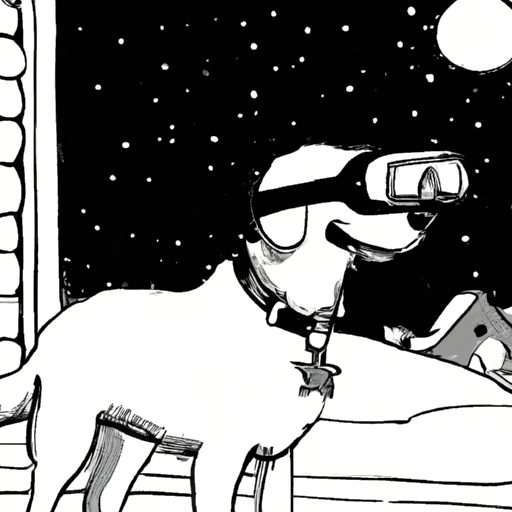Understanding Your Dog’s Vision
Beloved dog owners, you’ve probably wondered how your furry friend sees the world, especially when the sun sets and darkness takes over. Unlike us, dogs have evolved to see in dim light, thanks to the tapetum lucidum, a layer of cells in their eyes that reflects light and helps improve night vision.
There’s a stark difference between human and canine vision. For instance:
- Humans see the world in full color. We have three types of color receptors, also called cones, that perceive red, green, and blue.
- Dogs, on the other hand, only have two types of cones. They perceive the world in shades of blue and yellow but cannot distinguish red and green.
| Humans | Dogs | |
|---|---|---|
| Color Perception | Full Color | Blue and Yellow |
| Night Vision | Poor | Good |
Your Dog’s Night Vision Capabilities
You may notice that your canine companion navigates effortlessly around the house when the lights are turned off. You might even find them happily playing in the yard long after sundown. This is because their eyes are designed to function better in low-light conditions.
- Their retinas have more rod cells, which are responsible for perceiving light and motion.
- Their large pupils allow more light to enter.
- The aforementioned tapetum lucidum reflects light back through the retina, enhancing their ability to see in the dark.
How Your Dog Uses Their Night Vision
Your dog’s superior night vision comes in handy in various ways.
- Safety: It allows them to identify potential hazards in the dark, such as uneven terrain or predators lurking in the shadows.
- Hunting: For their wild ancestors, the ability to see clearly at night was crucial for hunting prey. Even domesticated dogs use their night vision to spot small animals or toys in the dark.
- Communication: Dogs can read body language and facial expressions of other dogs and humans, even in low light conditions.
Enhancing Your Dog’s Night Vision
As caregivers, you naturally want the best for your furry friends. If you’re concerned about your dog’s night vision, there are a few steps you can take:
- Regular Check-ups: Make sure to schedule regular vet visits to catch any potential eye problems early.
- Proper Nutrition: A balanced diet rich in antioxidants can help maintain your dog’s eye health.
Frequently Asked Questions (FAQs)
Q1: Can all dogs see in the dark?
A: While all dogs have better night vision than humans, some breeds have better night vision than others.
Q2: Can my dog see colors at night?
A: Dogs cannot see colors in the dark. They see in shades of grey when it’s dark.
Q3: How can I tell if my dog’s night vision is deteriorating?
A: If your dog is bumping into objects, seems disoriented, or hesitant to move in the dark, it could indicate a problem with their night vision. Consult your vet if you notice these signs.
Armed with this knowledge, you can now better understand and appreciate your four-legged friend’s nighttime adventures. Remember, their eyes are not just the windows to their souls, but also to a world that is vastly different from ours.



